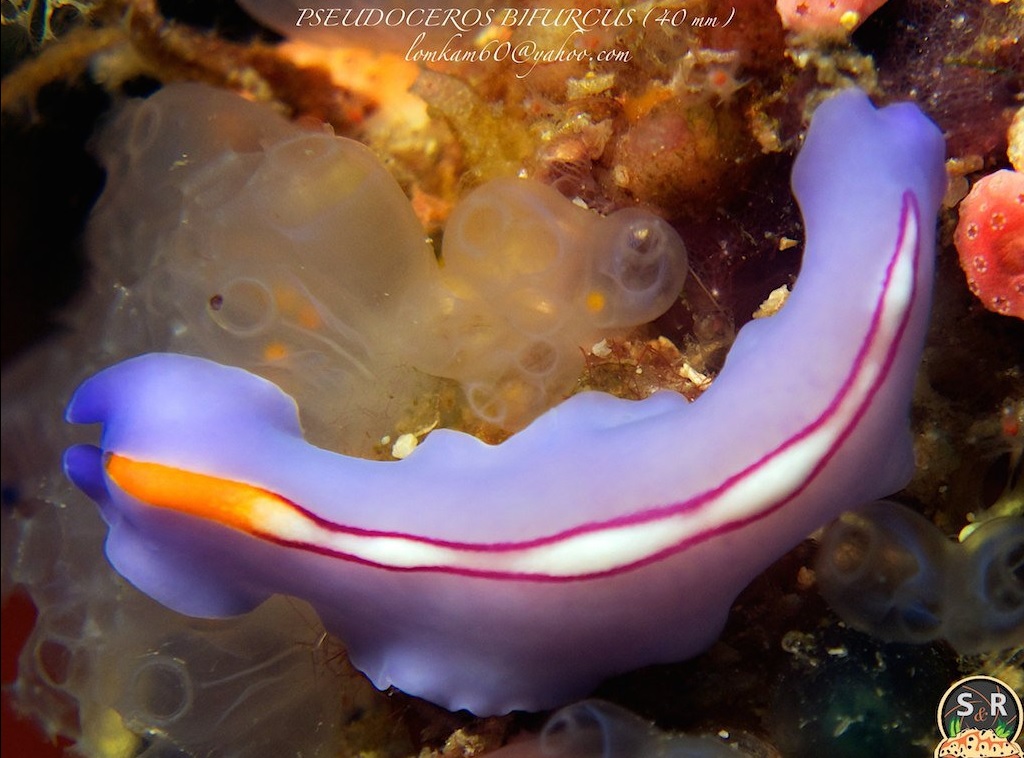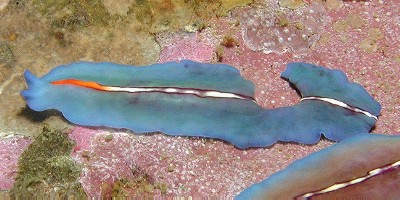It's time to have a talk...
About the birds and the bees
Figure 1. Pseudoceros bifurcus image by Erwin Koehler
This marine flatworm is a hermaphrodite, meaning that is has both male and female reproductive organs and reproduce with one another by hypodermic insemination. This is also known as a "crude copulation act" (Siefarth, 2002).
"Penis fencing"
During this unique ritual, two flatworms will move toward one another, roll around together and then avert their penis and stylets outward. The two partners attempt to stab the other. This can sometimes result in injury but luckily wounds tend to heal within 24 hours. They are also trying to avoid being stabbed as a retaliation while they try to stab the other. The successful animal is then attached to its partner with its stylet embedded in the skin of the other for a couple minutes. At this phase sperm is being injected (Siefarth, 2002).
These amazing marine flatworms can do two things at once! They can have their eggs fertilized OR fertilize their own eggs... This can happen all at the same time. Each shares half the amount of genes in their eggs and in their partner; this way, they can still exchange genes. After their mating has commenced, the organisms are not very likely to mate with the same partners again (Vinicuis, 2010).
Fertilization
 Now you are probably wondering what the overall goal of penis
fencing really is. It is to impregnate the other flatworm
without having their own eggs fertilized. That
does not sound fair to the other
animal at all, does it? These worms
try to forcefully inject their sperm cells into their partner
instead of simultaneously exchanging gametes like in "typical" life
cycles where cross fertilization occurs. Essentially, though they
are hermaprodites, the stronger "sex" of the Pseudoceros
bicurcus is the male (Vinicuis, 2010).
Now you are probably wondering what the overall goal of penis
fencing really is. It is to impregnate the other flatworm
without having their own eggs fertilized. That
does not sound fair to the other
animal at all, does it? These worms
try to forcefully inject their sperm cells into their partner
instead of simultaneously exchanging gametes like in "typical" life
cycles where cross fertilization occurs. Essentially, though they
are hermaprodites, the stronger "sex" of the Pseudoceros
bicurcus is the male (Vinicuis, 2010).
Fig. 2. Pseudoceros bifurcus image by Sonja Ooms
After insemination
The sperm cells move toward the oviducts after insemination, which just means that by now the sperm has been successfully injected into one of the organism's bodies (Siefarth, 2002). The eggs now get fertilized and are dropped off into a goofy-shaped eggmass. This eggmass has hundreds of other eggs that are tightly compacted against one another like sardines in a can. Transparent larvae, called Müller's larvae (pictured on the right), can then hatch in about ten days after fully developing (Siefarth, 2002).
Fig. 3. Muller's larvae
What are the advantages of this way of reproduction?
- The stronger of the two individuals in a sense "wins" over the weaker organism.
- This way of mating is less costly than the more typical ways of reproduction.
- It takes less energy to inject sperm than it does to release eggs.
- Directly injecting sperm is a way for males to ensure that the sperm will actually reach the egg.
Continue on to see its interactions with other organisms
References | Home